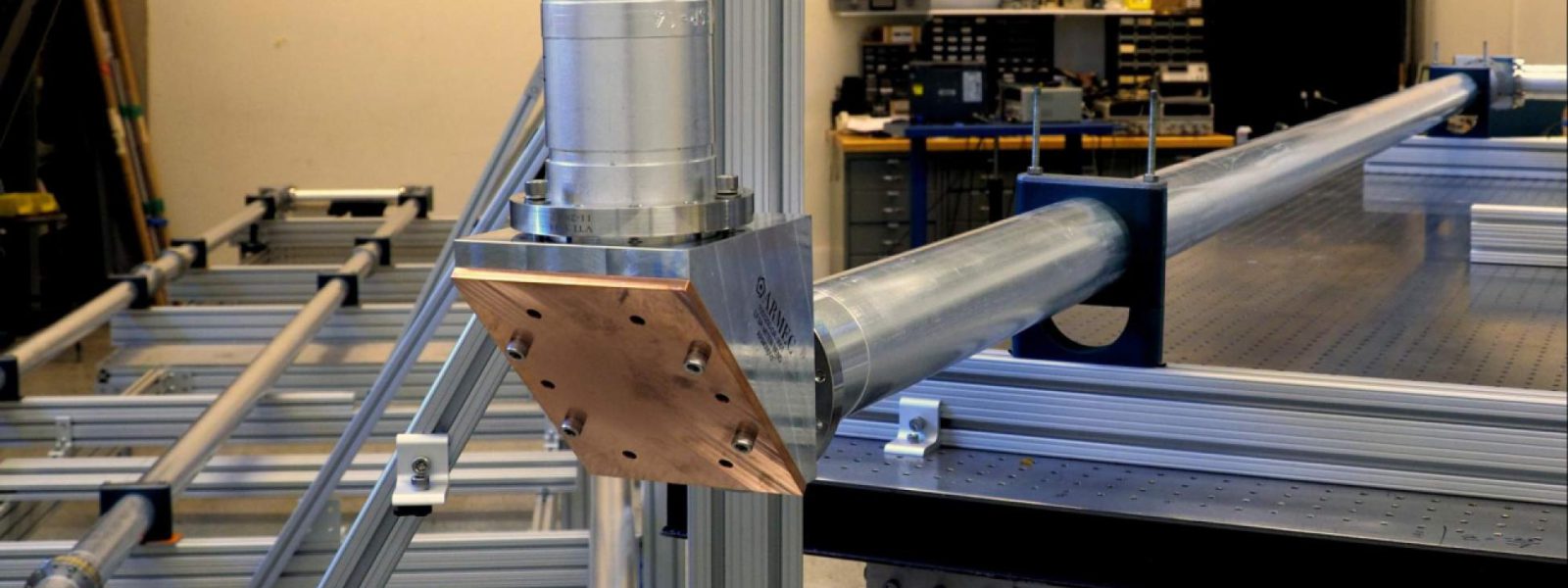The United States has made important progress this fall to advance contributions to ITER international fusion experiment diagnostic instruments and port plugs. As of October 29, 2014, procurement arrangements governing all 11 US ITER diagnostic systems have been signed with the ITER Organization; these arrangements define and assign the design, procurement and delivery responsibilities for the US. Four support contracts have been placed this year to advance designs, and one instrument is already in the final design phase. The US ITER diagnostics team is based at Princeton Plasma Physics Laboratory and works closely with the Oak Ridge National Laboratory managed US ITER project office.
The ITER project, now under construction in southern France, will offer opportunities for scientists to study reactor-scale burning plasmas at power levels that can demonstrate the feasibility of fusion power. Diagnostic instruments provide detailed information about the plasmas, allowing the operators to optimize the tokamak’s performance and to meet ITER’s goals. Ultimately, more than 40 instruments will be installed on the ITER machine. US ITER is designing seven instruments plus four port plugs, which will provide shielded housing for the diagnostics. The US diagnostics contributions will include x-ray, laser, microwave and optical systems.
“Plasma diagnostics has historically been an area of US strength, and we are home to some of the inventors of diagnostic techniques appropriate for ITER,” said David Johnson, team leader for US ITER diagnostics and principal research physicist at PPPL.

General Atomics and UCLA are leading the physics design for the low-field-side reflectometer, which will provide primary measurement of the electron density spatial profile in the outer edge of the plasma. This diagnostic also contributes to determining the plasma pressure gradient that influences plasma stability and energy transport. ORNL is developing the transmission line components needed for this instrument.
Palomar Scientific Instruments joins General Atomics and UCLA under contract to develop the physics design for the toroidal interferometer-polarimeter. This instrument, which determines the electron density by probing the plasma with a carbon dioxide laser, will be used as a sensor in a feedback system to control various fueling sources.
The electron cyclotron emission radiometer measures the spatial profile of the electron temperature in the plasma, a fundamental parameter for plasma behavior. The instrument provides time resolution adequate to serve in a feedback loop to stabilize predicted modes in the plasma. Three universities—University of Texas at Austin, University of Maryland and the Massachusetts Institute of Technology—are jointly developing the physics design, a calibration source, microwave sensors and analysis software.
Infrared and visible cameras for viewing inside the ITER tokamak chamber are now being developed by General Atomics, Lawrence Livermore National Laboratory and TNO, a Dutch laboratory for applied scientific research. This diagnostic will be used to look for parts of the ITER divertor region that are overheating.
Oak Ridge National Laboratory is developing the residual gas analyzer. Now in final design, the instrument will measure the concentrations of neutral gases during a plasma discharge in the divertor exhaust duct and in the main chamber of the tokamak.
The recently signed procurement arrangements cover two additional instruments. Experts at PPPL will develop the core imaging x-ray spectrometer, which will measure the plasma ion temperature and rotation. US ITER is targeting late 2015 for award of a contract for the motional Stark effect diagnostic instrument, which will measure the spatial profile of the current flowing in the plasma.
In addition to diagnostic instruments, US ITER will also provide design, fabrication, assembly and testing of four diagnostic port plugs. The instruments view the plasma through labyrinths in these plugs, which also serve as radiation shields for the device. The PPPL team is leading the port plug design and integration effort. Because of the harsh environment inside the tokamak vacuum vessel, the instrument systems must cope with a range of conditions not previously encountered by diagnostic technology, all while performing with high reliability. The US ITER team is also supporting the integration of multiple diagnostics into these plugs, including some from other ITER partners.
US participation in ITER is sponsored by the U.S. Department of Energy (DOE) Office of Science (Fusion Energy Sciences) and managed by ORNL in Tennessee, with contributions by partner labs PPPL and Savannah River National Laboratory. For more information, see usiter.org. ORNL is supported by the Office of Science of the DOE. The Office of Science is the single largest supporter of basic research in the physical sciences in the United States, and is working to address some of the most pressing challenges of our time. For more information, see science.energy.gov.
Media Contact: Lynne Degitz
Source: US ITER
